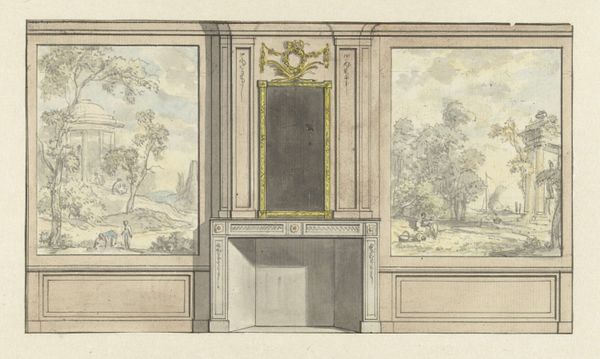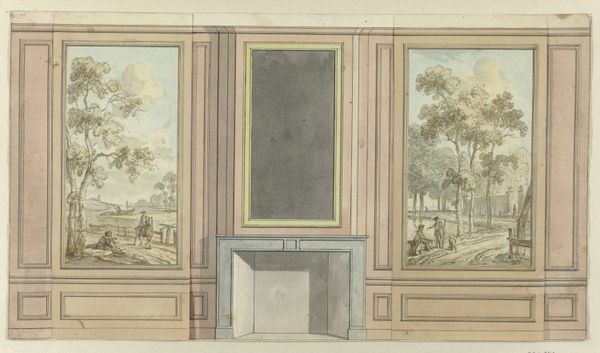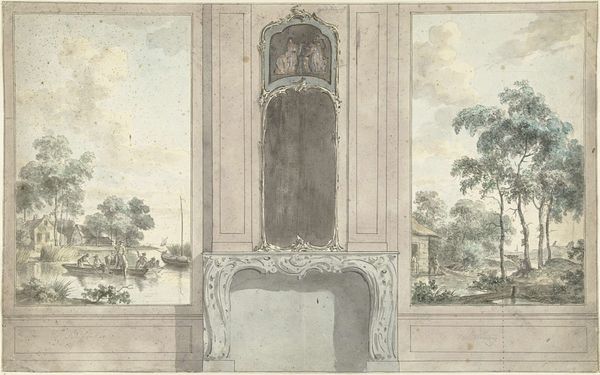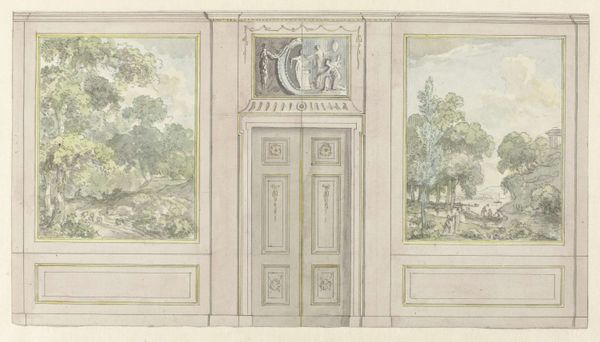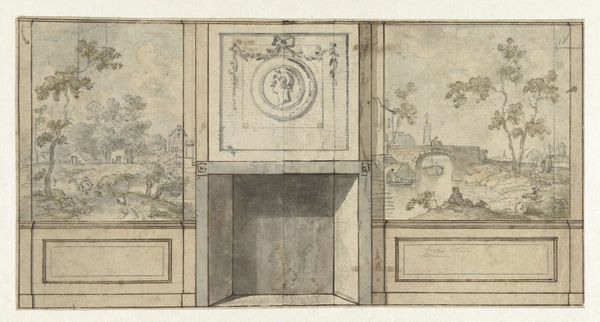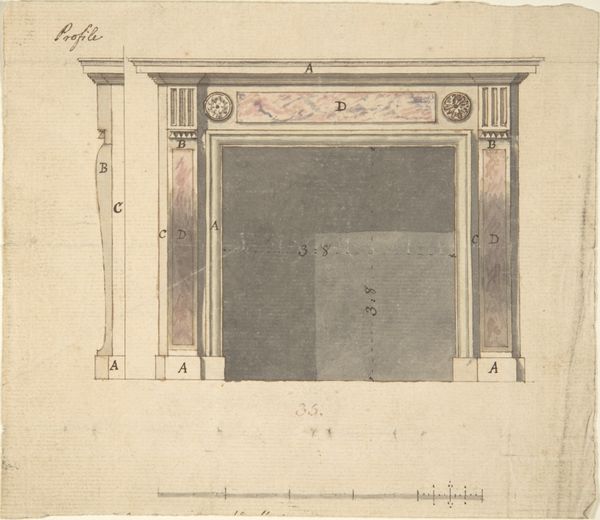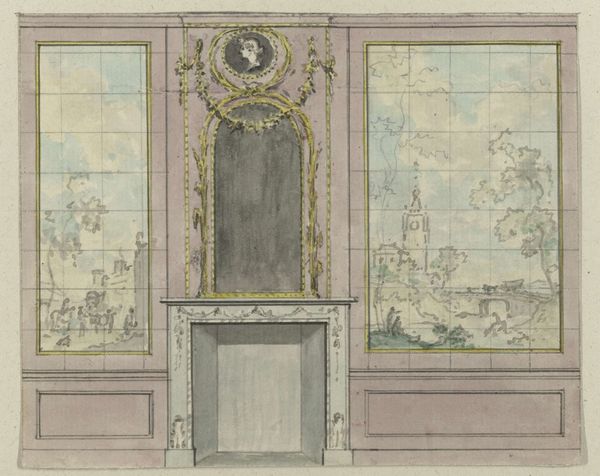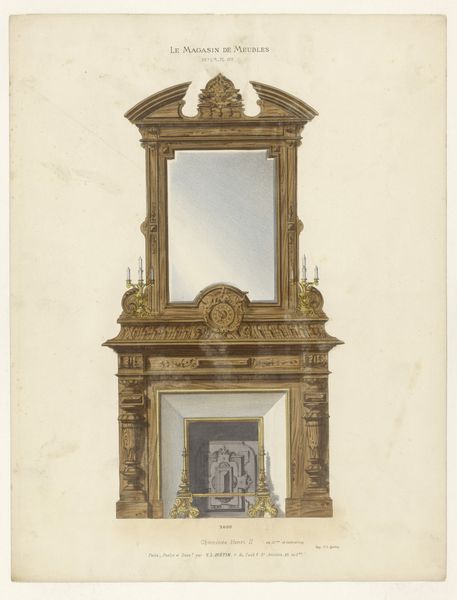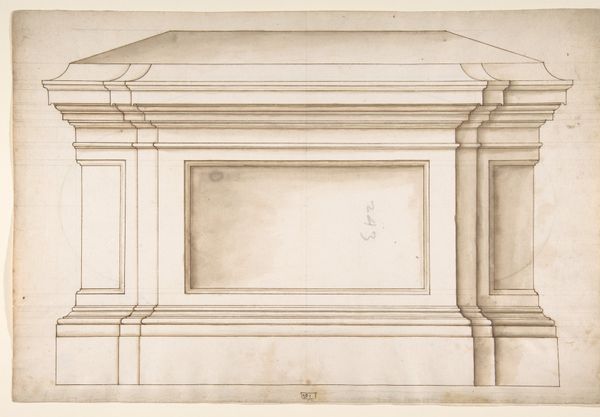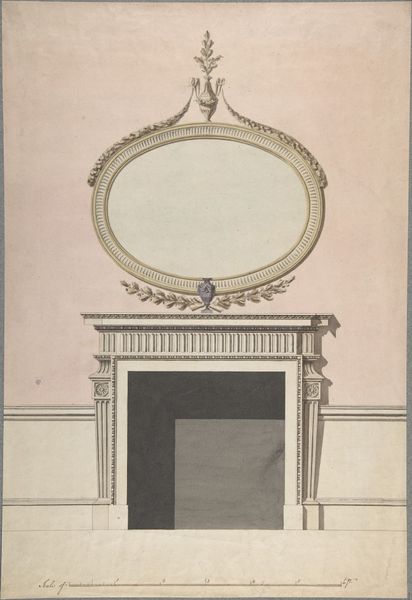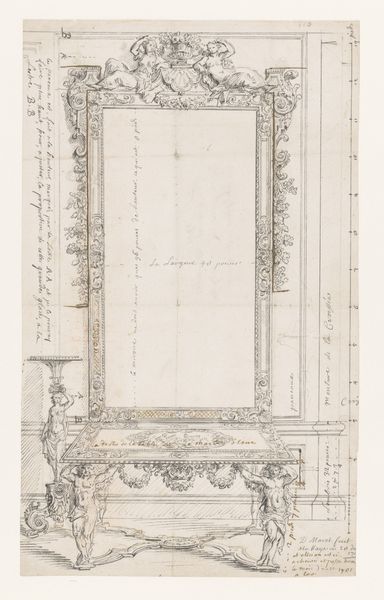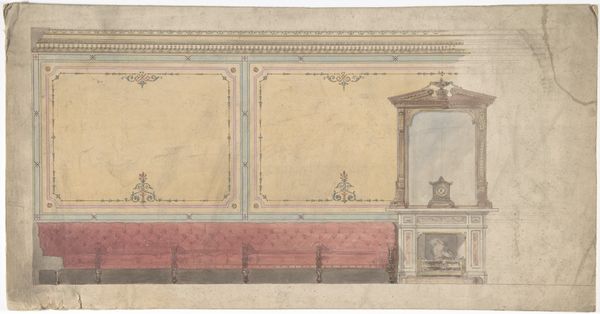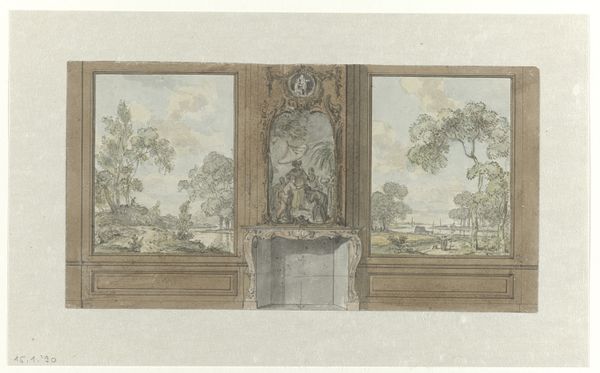
drawing, paper, ink
#
drawing
#
neoclacissism
#
landscape
#
paper
#
ink
#
architecture drawing
#
cityscape
#
genre-painting
Dimensions: height 240 mm, width 419 mm
Copyright: Rijks Museum: Open Domain
Art Historian: We’re looking at Jurriaan Andriessen’s "Ontwerp voor kamerwand voor Jddekinge," a drawing made sometime between 1752 and 1819, now held in the Rijksmuseum collection. It depicts a design for a room's wall. Curator: What immediately strikes me is its delicate, almost ephemeral quality. The subtle washes of ink, combined with the precise lines, create a serene yet structured space. Art Historian: It's important to remember that this is a design proposal. Andriessen was envisioning how this room might function within the social and cultural landscape of its time. Neoclassicism was in vogue, and these carefully rendered landscapes likely reflect a desire to bring idealized nature indoors. Curator: Absolutely. Notice how the landscapes on either side are framed like paintings, but they integrate seamlessly into the architectural structure. There’s a calculated harmony between the natural and the artificial. And that central mirror? It's strategically placed to reflect and expand the room's perceived size. Art Historian: And likely to reflect the inhabitants of the room too. Wealthy patrons wanted their homes to communicate their taste, education, and social standing. The scenes depicted -- those genre paintings of landscapes and cityscapes-- would have been carefully selected to convey particular values. Curator: True, there is the almost pastoral on one side, figures gathered by the water, balanced against what seems to be architecture and the surrounding countryside on the other panel. This duality creates visual interest, but is not chaotic; it leads one to a harmonious composition. The whole structure, including that classic mirror shape, offers such compositional harmony. Art Historian: It would have offered a calming, ordered environment, very much in line with the rational ideals of the Enlightenment. Though this work remains only a plan, the piece really shows how art was integral to domestic life, shaping both the physical space and the symbolic representation of its inhabitants. Curator: I agree, looking at the relationship of line and space is only half of the story here. Looking through your socio-historic lens only deepens my respect for the thoughtful crafting here. Thank you.
Comments
No comments
Be the first to comment and join the conversation on the ultimate creative platform.
